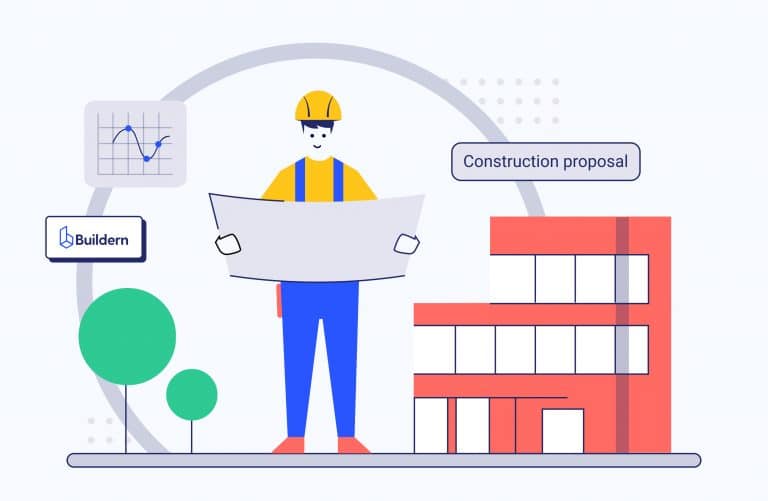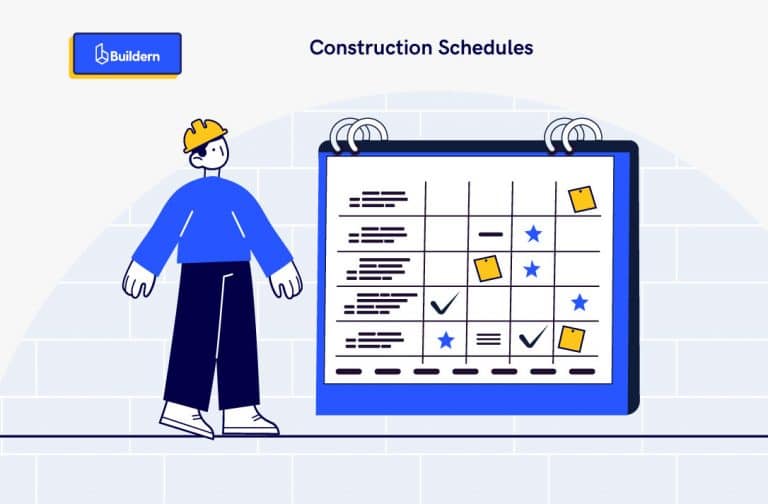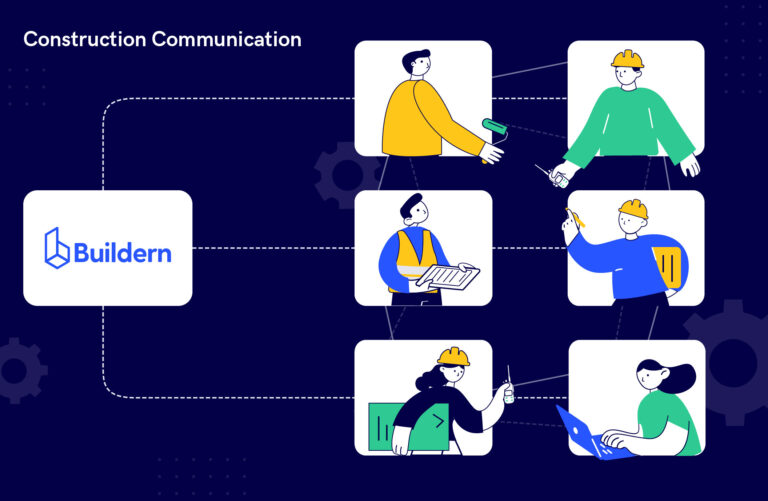Construction Contingency vs. Allowance | Key Differences Defined

Like any industry, construction is subject to risks and uncertainties. With emerging technologies, ever-changing economic challenges, and every new client with unique preferences and demands – staying agile as a construction business has become increasingly important. As a result, the contingency vs. allowance comparison has become an irreplaceable part of the construction planning and budgeting process.
At first sight, these relatively simple terms may seem interchangeable, and many use them as synonyms. In reality, contingency and allowance serve different purposes in the construction process and have distinct implications for the timeline and budget.
Simply put, construction contingency refers to unknown unknowns, while allowances are the financial backup for known unknowns. Conflating contingency and allowance can lead to misallocating resources, delays in project completion, and, ultimately, increased costs.
To help you with efficient construction budgeting and contingency planning, here is a brief breakdown of the key differences for the contingency vs. allowance fair comparison.
What Is Construction Contingency?
Definition & Purpose
Contingency is a predetermined sum of money allocated to cover potential risks or changes in the project scope that are not known in advance. Added to an estimate for contingency reasons, contingency funds are intended to pay for unanticipated costs that may arise during the project lifecycle.
Projects with allocated contingency funds are securely protected against overruns, scheduling delays, and any other risks that may arise during construction. While preparing for every project contingency in advance is almost impossible, a well-defined plan will guarantee a smooth operational workflow. Depending on project scopes and specific circumstances, reasons and the preplanning preparations differ.

Contingency Use Cases for Builders
Weather Conditions
Depending on the project location, seasonal weather conditions can pose a risk for construction. For instance, if you are working on an exterior build in winter or in a high-altitude environment, contingency funds should be allocated to cover the extra snow removal and materials protection costs.
Material and Labor Cost Fluctuations
As CoreLogic’s Cordell Construction Cost Index (CCCI) climbed to an unprecedented 11.9% over 2022, builders should remain prepared for the increasing labor and material costs. Allocating contingency funds can help you be ready to respond quickly to changing market conditions. Moreover, while most of the materials can be ordered in advance, their price may fluctuate before delivery.
Cost Overruns
Consider having precisely planned contingency funds to avoid any extra costs because of miscalculations or changes in the project scope. Contingency funds often cover overages due to additional labor hours, supplementary materials, or other unexpected circumstances.
Design Errors or Modifications
Incomplete or inaccurate designs and project modifications can lead to additional labor hours, material shortages, and delay-causing issues during construction. Companies practicing contingency policies secure their projects with funds to cover any extra costs caused by such events.
Unexpected Site Conditions
Fires, crane and forklift accidents, or machinery malfunction are just a few examples of unexpected site conditions that can burden your project. Neglecting due attention and preparing for such scenarios can substantially increase project complexity and costs.
With contingency funds, builders can respond to such events while keeping their budget and timeline intact. It’s a win-win for everyone involved in the project: the client, subcontractors, vendors, and builders.
Calculating Construction Contingency
Handling unexpected costs requires a contingency budget proportional to the project size and complexity. Building contingency funds should be derived from historical data, taking into account the potential risks and costs related to the project and the industry standards.
Furtherly we will define two methods builders frequently use to allocate backup funds for their projects.
Deterministic Method
Usually implying 5-10% as a predetermined percentage for contingency funds, this method uses the following formula:
% x Project Base Cost Estimate = Contingency Fund
For instance, if the risk probability equals 10%, a project with a final cost estimate of $120,000 would have a contingency fund of $12,000.
How do companies define the proper percentage for the projects? Expert judgment and accepted guidelines from authoritative bodies help find the correct contingency percentage.
Probabilistic Method
Probabilistic risk assessment methods vary according to the project scope and risk probability. The expected monetary value is commonly used to decide the contingency fund’s amount. In this case, risk probability is multiplied by the impact if it occurs.
The expected monetary value of risk = Probability of Risk Occurring x Impact if it occurs
The probabilistic method is relatively complicated as compared to the deterministic method. Hence, builders often opt for contingency funds based on a predetermined percentage of the project cost estimate.
Still, the probabilistic method may be more suitable if your projects exceed $10 million and immensely rely on new technologies or enter a new market.
Summing Up Contingency: Contingency funds are essential to keep your project budget and timeline intact. Whether you go for a deterministic or probabilistic strategy, contingency funds are calculated based on typical costs and specific circumstances. Applying contingency funds to cover unknowns can help you maintain the project’s quality.
What Is Construction Allowance?
Definition & Purpose
Construction allowance is a budget set at the beginning of a project determining the amount of money set aside for items with variable costs. The so-called known unknowns refer to project components with an uncertain cost. The allowance addresses these items and secures the budget from unexpected cost overruns.
Construction managers are free to determine and set allowances in different units: per item, per sq.ft, per acre, room, etc. Some of the most common items heavily relying on allowances include lighting fixtures, plumbing appliances, cabinetry, etc.
Why Use Construction Allowances
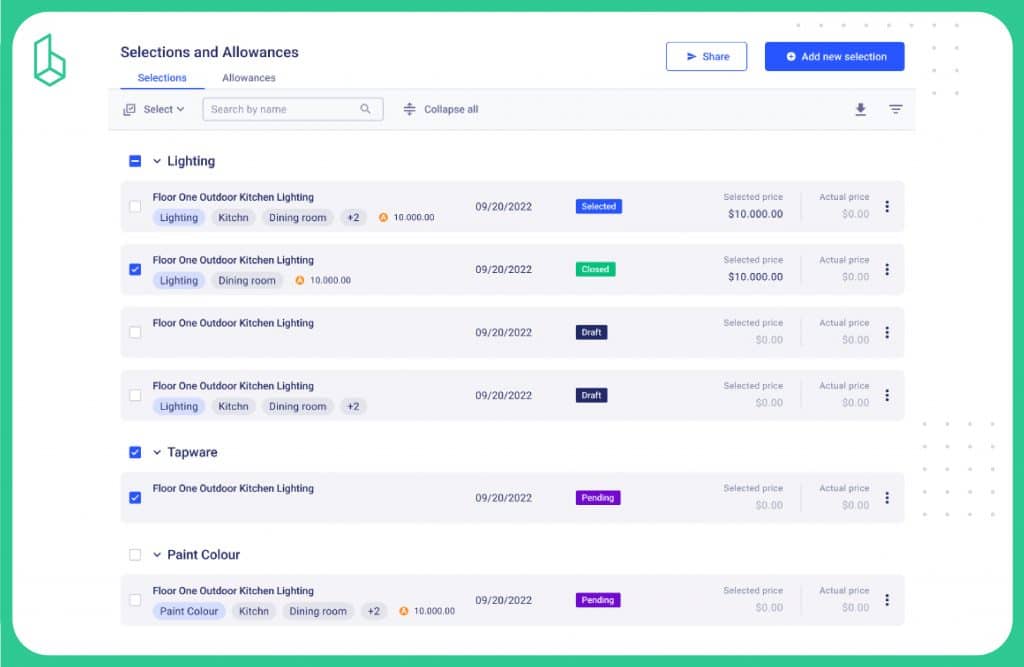
Construction companies rely on allowances when there’s a lump sum involved in the agreement. Outlining an allowance helps secure predetermined budget limits and prevent surprises down the road.
Typically, allowances are adjusted during the building process, depending on the project’s scope and amendments. It’s their way to insure against potential risks and guarantee that the budget is allocated correctly.
Two Types of Construction Allowances
Handling known unknowns requires no less proficiency and planning. Depending on the project’s requirements, allowances may be classified into two distinct types: material and installation allowances. Let’s see how each of them works.
Material Allowance
The owner or the project manager may sometimes be unable to choose certain materials for various reasons. For instance, budgeting the work for tile floors when the client suddenly chooses hardwood may result in significant cost overruns.
Material allowances help create a budget to cover the variable costs and avoid cost disparities.
Installation Allowance
Although most allowances cover only materials, sometimes it is also necessary to have extra coverage for changes in the scope of work. Installation allowances help avoid potential cost overruns from labor costs.
Suppose, as a general contractor, you didn’t account for any labor to install the tiling. When the due day to install the tile comes, you must allocate additional resources to get it done. The installation allowance will cover additional costs incurred due to labor and materials, ensuring no worker is left without payment.
Summing Up Allowance: Construction allowance is a backup budget to cover expected and known unknown costs like flooring or plumbing fixtures. Knowing when to use material or installation allowances is essential for keeping the budget in check and avoiding potential cost overruns. It indeed has its differences from contingency. Yet, while digging deeper into the contingency vs. allowance comparison, we see that having both is an excellent way to guarantee a successful outcome.
How to Create Construction Allowances
With a general rule of thumb, the client pays the difference to the contractor if the cost exceeds the allowance. On the other hand, if it is less than the allowance, the contractor must credit it back to the client. This may seem simple, but there are some steps you should follow to create an effective construction allowance.
Here’s a quick guide for creating allowances!
Step 1. Managing allowances
Closely interrelated with selections and estimation, the allowances section in Buildern helps you break down costs into corresponding categories, like allowances for the kitchen, bedrooms, bathrooms, etc. With real-time upgrades, the system guarantees clear visibility to all participants.

Buildern users can create allowances right from the estimation, breaking down every element with its respective allowance. Add allowances for material, labor, equipment, subcontractors, or fee to guarantee coverage for known unknowns.
Note that one allowance may have innumerate selections, allowing the contractor to present each item with a detailed description and cost.
Step 2. Defining allowances
The section provides an overview of the total allowances set. This helps you track how much was allocated to each allowance and see whether the total exceeds the overall budget. See the selected and actual prices for each allowance to ensure no discrepancy reaches the client.
Step 3. Share the files with clients
Buildern’s user-friendly interface allows sharing of construction project-related files, bills, estimates, invoices, and other documents with clients. Selections and allowances are not an exception. Users can send allowances and selections directly from Buildern’s dashboard. Simply share a link so that your clients can view the document without logging into the system.
Due to its flexible nature, clients are free to access project data and documents from any device.
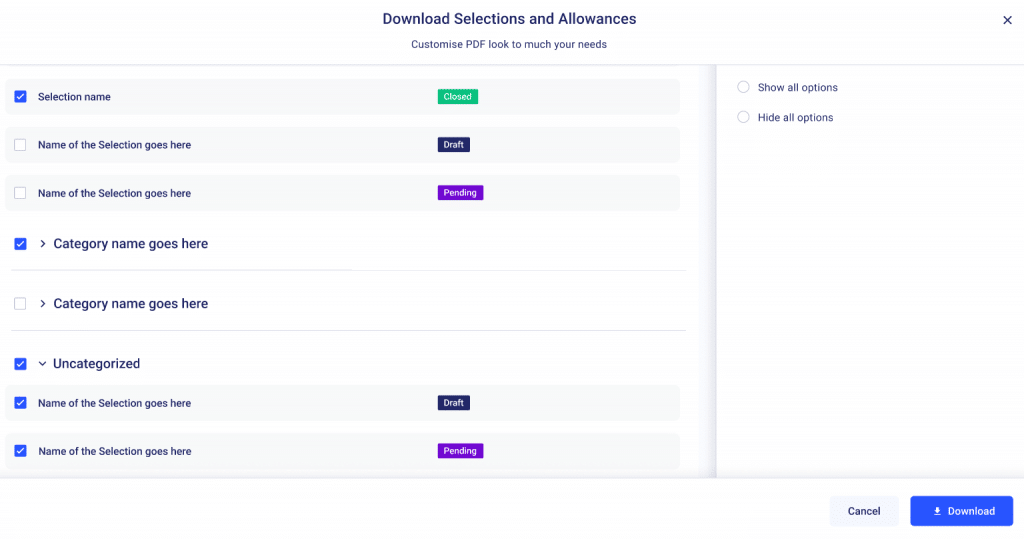
Download Selections and Allowances in PDF Format
For those communicating with their clients offline or via platforms besides email, Buildern allows them to download a PDF version of any specific document and share it with the clients.
Click the download button and customize the PDF file to match your purposes. The document will include a detailed representation of dates, current statuses, and financial outlines.
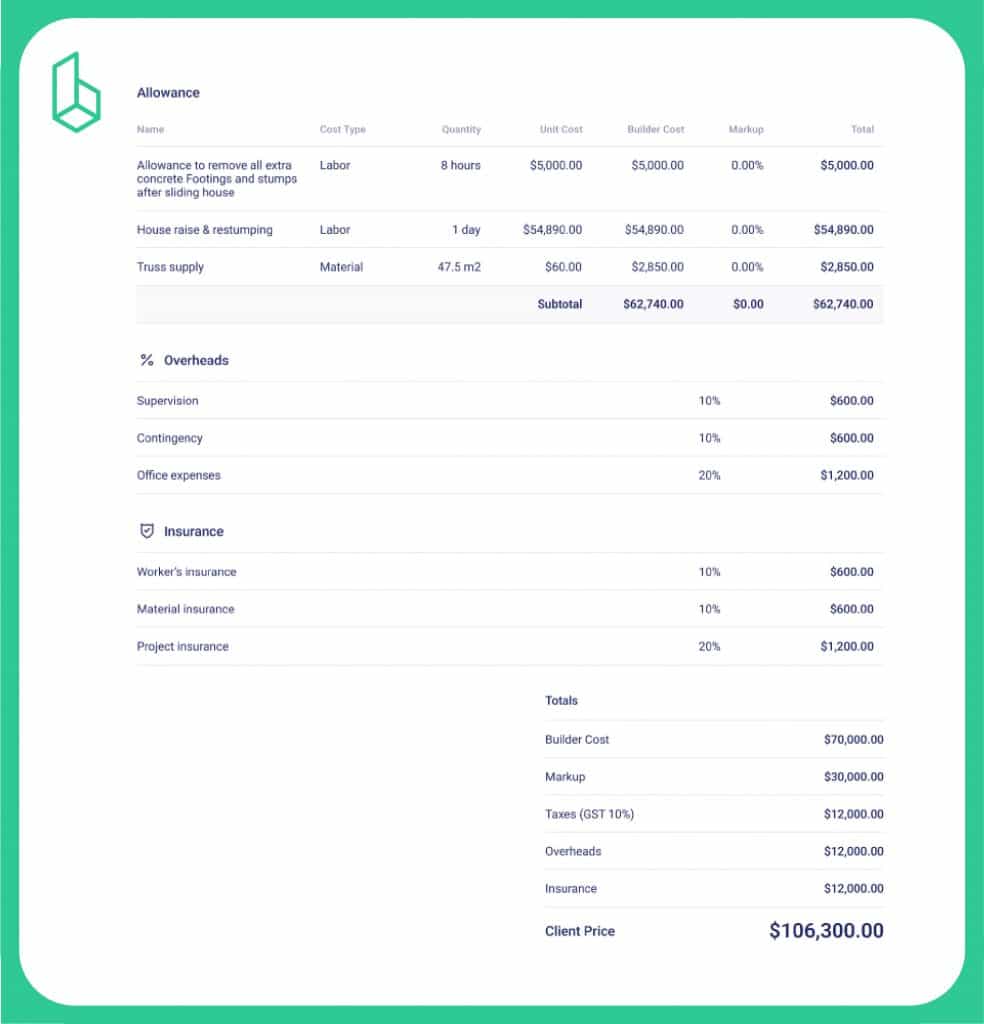
The Bottom Line of the Contingency Vs. Allowance Comparison
As construction companies need to be nimble and prepared to market fluctuations and unforeseen events, contingency and allowance are two essential practices to stay on top of the game.
When utilized together, the contingency vs. allowance duo provides contractors the flexibility they need to face any situation while keeping the budget and timeline on track. In a contingency vs. allowance comparison, contingencies help contractors keep unexpected risks under control. In contrast, allowances cover the scope of work costs yet to be finalized through the builder-client communication. Understanding how the two practices affect the project outcome via interchangeable strategies is essential for successful completion.
Only those investing in advanced solutions like Buildern will benefit from budget-allocating features, allowing them to manage a project’s financial health better. Now that we’ve shed light on adequate construction project management policies, you are welcome to use Buildern to leverage your upcoming allowances and provide accurate budget estimates for your clients!
Happy building!




